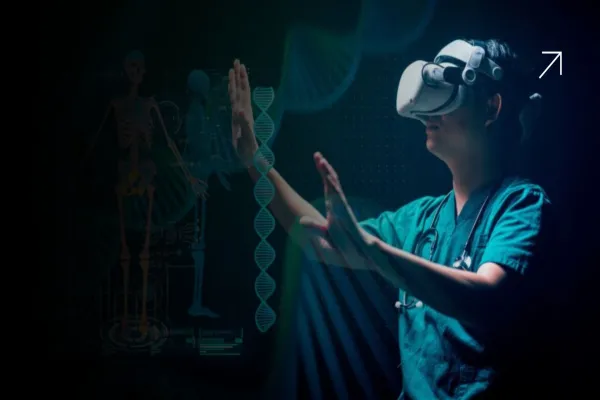The digital-first trap: Every pharma boardroom today is chasing “digital-first.” It sounds good on slides. Automated campaigns. AI-driven targeting. CRM dashboards glowing with data. But here’s the catch: in the rush to digitize, too many companies forget the basics. Doctors are not data points. They’re people, operating in high-pressure environments, making life-and-death decisions daily.
If digital-first becomes doctor-last, engagement collapses. Automation without empathy is spam at scale. And that’s why every serious pharma CMO is rethinking what “digital-first” really means in 2025.
What automation can do, and what it can’t
Automation in pharma marketing is not the enemy. Done well, it eliminates inefficiency, accelerates compliance, and ensures doctors get timely information. Triggered reminders, auto-personalized emails, and WhatsApp nudges all have their place.
But automation can’t replace judgment. It can’t sense when a doctor is fatigued from over-communication. It can’t adapt the tone of a conversation based on the doctor’s unique style. It can’t replicate the trust built when a rep listens instead of pushing.
The best systems recognize this. They don’t try to replace empathy. They scale it.
Why doctors disengage
Doctors disengage when pharma forgets that information alone doesn’t equal value. Flooding an oncologist with clinical trial updates every week doesn’t help if the information isn’t relevant to their patient base. Bombarding a diabetologist with SMS reminders about general awareness campaigns feels tone-deaf if it doesn’t align with their actual prescribing patterns.
Digital-first fails when it prioritizes frequency over meaning. That’s why many doctors tune out. Not because they dislike digital, but because they dislike irrelevance.
Balancing scale with sensitivity
The challenge isn’t choosing between automation and empathy. It’s designing systems where the two reinforce each other.
- Automation ensures no doctor is left out.
- Empathy ensures no doctor feels like just another contact.
- Automation delivers speed and compliance.
- Empathy delivers trust and engagement.
That balance is what separates pharma brands that get ignored from those that get invited back into the conversation. And it’s where a capable b2b healthcare marketing agency makes the difference.
Where empathy fits in digital-first systems
So what does empathy look like in practice when applied through MarTech?
- Contextual timing: A doctor who just attended your webinar doesn’t need three follow-up messages in the same week. They need one thoughtful nudge that acknowledges the interaction and adds value.
- Localized relevance: A GP in Nagpur should not get the same material as a specialist in Mumbai. Local languages, regional therapy trends, and cultural nuance matter.
- Doctor choice: Let doctors set their preferences for channels and frequency. Respecting boundaries is empathy at scale.
- Integration with reps: Reps shouldn’t be bypassed by automation. They should be empowered by it, armed with insights from digital touchpoints so they can deepen conversations in person.
Empathy is not about being “soft.” It’s about being relevant and respectful. That’s what makes automation work instead of backfiring.
The compliance guardrail
Some leaders worry that balancing empathy with automation risks crossing compliance lines. It doesn’t, if systems are designed right. Schedule H restrictions and UCPMP 2024 don’t prevent personalization or contextual engagement. They just demand discipline: approved content libraries, audience gating, and audit trails.
This is exactly why empathy has to be engineered, not improvised. A doctor who receives consistent, compliant, and relevant messages builds trust in the brand. A doctor who gets off-label claims via rogue WhatsApp forwards loses it.
Compliance isn’t the enemy of empathy. It’s the guardrail that keeps it credible.
The rep’s role in a digital-first world
Reps are often the casualty of digital-first strategies. Companies assume automation will make them less relevant. In reality, reps become more important when digital is done right.
Think about it: if automation handles the routine reminders, reps are freed up to focus on deeper conversations. If the CRM shows a rep which content a doctor engaged with last week, the rep walks in prepared, relevant, and empathetic. That’s digital and human working together, not competing.
A b2b healthcare marketing agency that understands this won’t sell “rep-less engagement.” They’ll build systems where reps and automation amplify each other.
Why pharma can’t afford doctor-last
The danger of doctor-last digital isn’t just lost engagement. It’s reputational damage. Doctors talk. If your brand floods inboxes with irrelevant blasts, word spreads. If your reps show up uninformed because they’re out of sync with digital campaigns, credibility suffers.
On the flip side, when doctors experience personalized, respectful, and compliant engagement, they reward it with attention, and often, prescription trust. That’s why balancing automation with empathy isn’t a soft issue. It’s a growth issue.
The boardroom takeaway
Digital-first doesn’t mean doctor-last. It means designing systems where automation scales efficiency and empathy scales trust. It means treating doctors as individuals, not inboxes. It means giving reps the tools to be smarter, not sidelined.
For Indian pharma CMOs, the real question isn’t “how fast can we automate?” It’s “how well can we balance?” Because in 2025, the brands that strike that balance will own the space between technology and trust. And the b2b healthcare marketing agency that helps them do it will be worth every rupee.
If your automation is drowning out empathy, you’re losing doctors, not gaining them. Let’s build digital-first systems that put doctors first.





